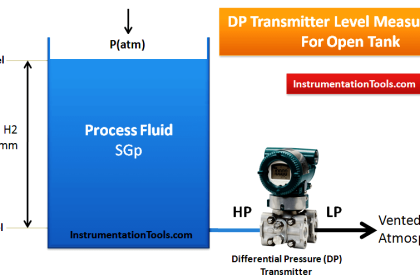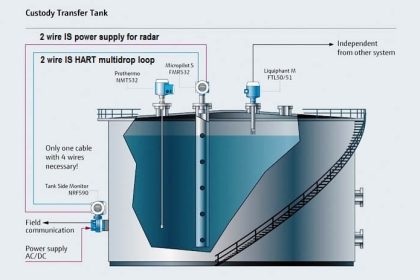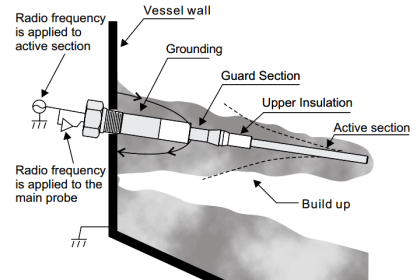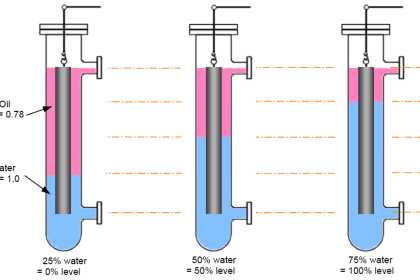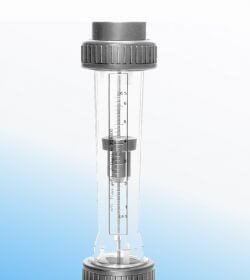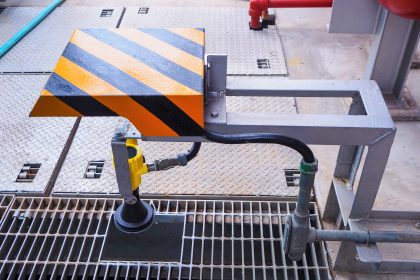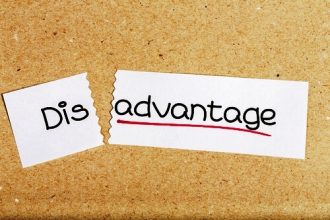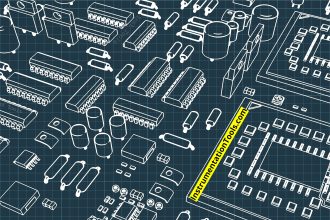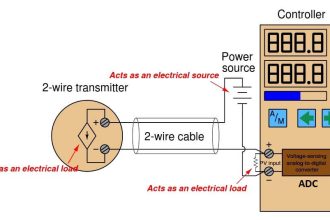Capacitance Level Measurement:
Capacitive level transducer is an example of indirect measurement of level
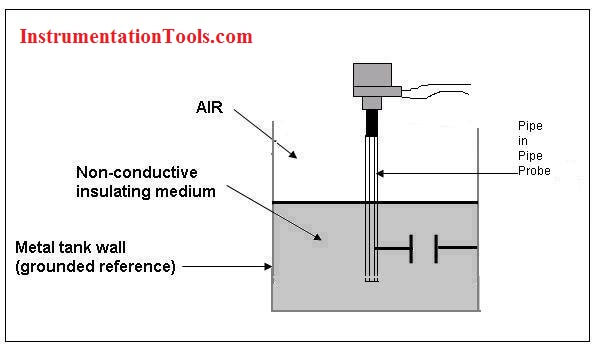
Capacitance level sensors are used for wide variety of solids, aqueous and organic liquids, and slurries. The technique is frequently referred as RF as radio frequency signals applied to the capacitance circuit. The sensors can be designed to sense material with dielectric constants as low as 1.1 (coke and fly ash) and as high as 88 (water) or more. Sludges and slurries such as dehydrated cake and sewage slurry (dielectric constant approx. 50) and liquid chemicals such as quicklime (dielectric constant approx. 90) can also be sensed. Dual-probe capacitance level sensors can also be used to sense the interface between two immiscible liquids with substantially different dielectric constants.
Since capacitance level sensors are electronic devices, phase modulation and the use of higher frequencies makes the sensor suitable for applications in which dielectric constants are similar.
Working Principle:
The principle of capacitive level measurement is based on change of capacitance. An insulated electrode acts as one plate of capacitor and the tank wall (or reference electrode in a non-metallic vessel) acts as the other plate. The capacitance depends on the fluid level. An empty tank has a lower capacitance while a filled tank has a higher capacitance.
A simple capacitor consists of two electrode plate separated by a small thickness of an insulator such as solid, liquid, gas, or vacuum. This insulator is also called as dielectric.
Value of C depends on dielectric used, area of the plate and also distance between the plates.
Where:
C = capacitance in picofarads (pF)
E = a constant known as the absolute permittivity of free space
K = relative dielectric constant of the insulating material
A = effective area of the conductors
d = distance between the conductors
This change in capacitance can be measured using AC bridge.
Measurement:
Measurement is made by applying an RF signal between the conductive probe and the vessel wall.
The RF signal results in a very low current flow through the dielectric process material in the tank from the probe to the vessel wall. When the level in the tank drops, the dielectric constant drops causing a drop in the capacitance reading and a minute drop in current flow.
This change is detected by the level switch’s internal circuitry and translated into a change in the relay state of the level switch in case of point level detection.
In the case of continuous level detectors, the output is not a relay state, but a scaled analog signal.
Level Measurement can be divided into three categories:
- Measurement of non-conductive material
- Measurement of conductive material
- Non-contact measurement
Non-conducting material:
For measuring level of non conducting liquids, bare probe arrangement is used as liquid resistance is sufficiently high to make it dielectric. Since the electrode and tank are fixed in place, the distance (d) is constant, capacitance is directly proportional to the level of the material acting as dielectric.
Conducting Material:
In conducting liquids, the probe plates are insulated using thin coating of glass or plastic to avoid short circuiting. The conductive material acts as the ground plate of the capacitor.
Proximity measurements (Non-contact type measurements):
In Proximity level measurement is the area of the capacitance plates is fixed, but distance between plates varies.
Proximity level measurement does not produce a linear output and are used when the level varies by several inches.
Advantages of Capacitive level measurement:
- Relatively inexpensive
- Versatile
- Reliable
- Requires minimal maintenance
- Contains no moving parts
- Easy to install and can be adapted easily for different size of vessels
- Good range of measurement, from few cm to about 100 m
- Rugged
- Simple to use
- Easy to clean
- Can be designed for high temperature and pressure applications.
Applications:
Capacitance Level Probes are used for measuring level of
- Liquids
- Powered and granular solids
- Liquid metals at very high temperature
- Liquefied gases at very low temperature
- Corrosive materials like hydrofluoric acid
- Very high pressure industrial processes.
Disadvantages:
Light density materials under 20 lb/ft3 and materials with particle sizes exceeding 1/2 in. in diameter can be a problem due to their very low dielectric constants (caused by the large amount of air space between particles).
